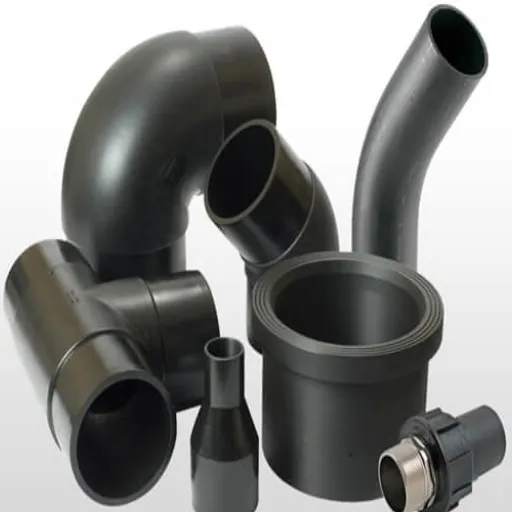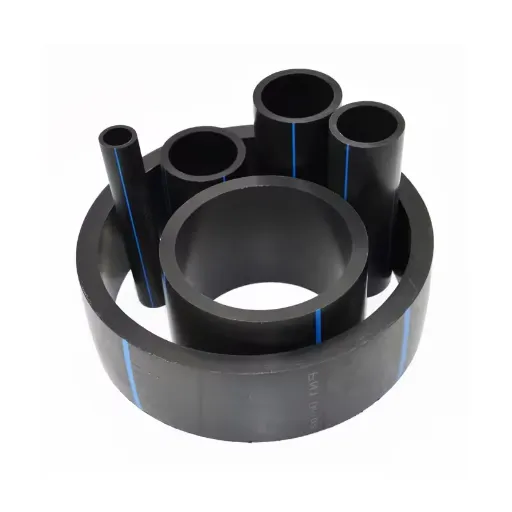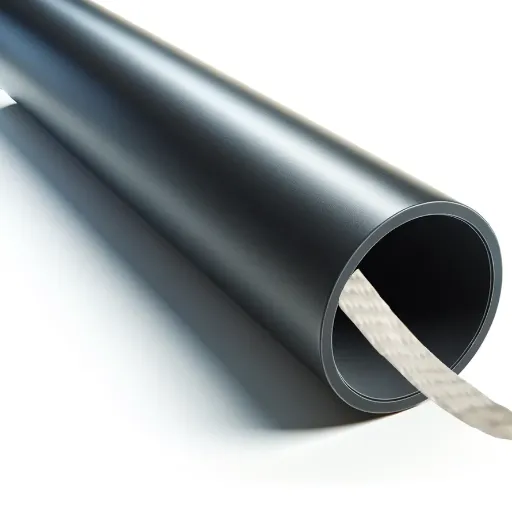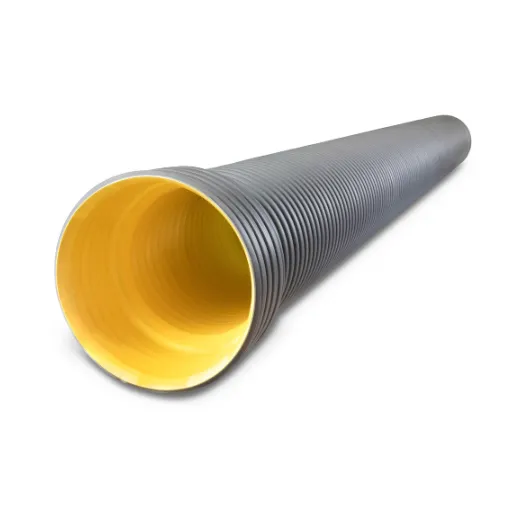Across several industries, High-Density Polyethylene pipes are a preferred choice for durability, flexibility, and corrosion resistance. The lifespan and performance of an HDPE piping system depend greatly on the welding methods applied. Regardless of whether you are completely new at welding or an experienced HDPE welding professional, it is essential to master welding methods and best practices to consistently create strong, leak-proof joints. This article reviews the basics of HDPE pipe welding methods along with professional tips, walking you through the process of making safe and dependable connections.
Introduction to HDPE Pipe Welding
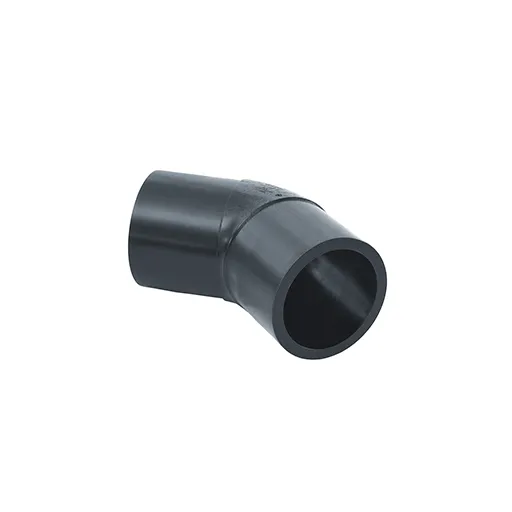
What is HDPE?
HDPE, or High-Density Polyethylene, is a thermoplastic material soft to the touch but considered among the toughest and most versatile resins due to its multitude of applications. Produced from petroleum, it has a high strength-to-density ratio and is therefore considered lightweight and tough. Resistance to impact, chemical reactions, and environmental stresses makes it very useful in irrigation pipes, containers, and other industrial products.
Among several applications that find HDPE in practice, pipe manufacturing is most common. It is used for pipes for water supply, gas distribution, and sewage systems where corrosion resistance allows it to resist high-pressure flows and long duration even under adverse conditions. Also, HDPE pipes have flexibility in their uses where bends and curves may be needed without compromising integrity.
♻️ Environmental Benefits
HDPE has been gaining a reputation for being a green option, owing to its recycle-ability. HDPE products can be reworked into new materials, thus preventing waste build-up. This very strength-versatility-sustainability trio makes HDPE a major player in modern infrastructure and industrial applications.
Importance of HDPE in Construction
HDPE is an important construction material due to its high durability and capability to withstand various environmental conditions. It is highly resistant to attack by chemicals or moisture; hence its use is preferred in piping systems, geomembranes, and structural plastics, ensuring that it can stand for a very long time in harsh conditions while keeping costs at a minimum in terms of repair or maintenance.
Yet another property that HDPE enjoys is that it is lightweight, which makes it easier to transport and install. Despite being lightweight, HDPE exhibits great strength and flexibility, making it suitable for construction applications that require curves or more complicated design criteria. Hence, being easy to work with translates into less time and cost, which becomes an expensive option for contractor.
In addition, HDPE adds to sustainable construction owing to the recyclability of the material. The used materials get recycled and remade into new products, which cuts down on pollution, hence aiding the environment. Growing concerns for greener, safer materials stand for HDPE as nearby green alternatives relevant in modern infrastructure projects.
Overview of HDPE Pipe Welding Techniques
Some welding methods for HDPE pipe are utilized for producing strong, durable, and leak-proof connections. The most commonly used techniques are butt fusion, electrofusion, and socket fusion. These are widely applied because they easily and quickly build up joints at least as strong as the pipe itself.
🔥 Butt Fusion Welding
Considered one of the best methods in joining HDPE pipes, butt fusion heating heats the pipe ends to molten state and presses them together to form a strong seal. This technique is generally suitable for pipes having relatively bigger diameter, whereas the temperature and pressured controls are very precise.
⚡ Electrofusion Welding
Electrofusion welding utilizes specialized fittings that contain the electrical heating element. When connected to a source of electricity, the heating elements melt the pipe and fitting together to form a strong joint. This method is especially useful when working in tight quarters or with complicated pipe layouts, as it simplifies the connection process.
🔧 Socket Fusion Welding
The socket fusion technique makes use of a heating tool to heat the outside of the pipe and the inside of the fitting at the same time. When heated, the pipe and fitting are brought together for a sound bond. This method has a predisposition for use with pipes and fittings of small diameter, giving it a dimension of being less expensive for certain uses.
⚠️ Important Note
An adequate welding technique can only increase further the lifespan of HDPE piping systems. Anyway, the choice of welding method depends on factors such as pipe size, requirements on-site, and atmospheric conditions. Only trained personnel, following manufacturers’ guidelines, can guarantee successful installation results.
Butt Fusion Welding of HDPE Pipe
Process Steps for Butt Fusion
-
1
Preparation of Pipe Ends
The ends of the pipe must be cleaned and inspected to remove dirt or other contaminants, including oxidation. Using an appropriate pipe scraper or any other forming tool would strip the outer layer of the pipe, thereby providing a smooth clean surface to be joined.
-
2
Aligning the Pipes
In this step, the pipes are put into the butt fusion machine, making sure their ends are aligned with each other. If they are misaligned at this point, the joint will fail. The machine needs to hold the pipes firmly so that they can be fused accurately.
-
3
Facing the Pipe Ends
A facing tool is used to cut the pipe ends evenly so that they are perpendicular to the pipe axis. This proper facing operation results in flat and smooth surfaces that assure proper contact during fusion.
-
4
Heating the Pipe Ends
Position the heating plate between the pipes after preheating to the specified temperature (as per manufacturer’s manual). Heat the ends of the pipes for the specified period until they melt evenly. Any overheating or underheating at this stage will adversely affect weld strength.
-
5
Joining the Pipe Ends
Once the pipe ends are heated for the “correct” time, withdraw the heater plate, and immediately press the pipe ends together with controlled force. Fairly keep the pressure to allow materials to fuse.
-
6
Cooling the Joint
Let the joint cool for the specified time under pressure. Hasty or rough handling or moving of the joint during its cooling period weakens the weld. Should always be followed as per manufacturer’s recommendations.
-
7
Inspection and Testing
Check the welded joint for signs of imperfections such as voids or misalignment. If testing is deemed necessary, carry it out, usually hydrostatic pressure tests, to determine the joint’s integrity and performance.
💡 Pro Tip
By following these precise steps, one can expect to gain a firm, permanent weld securely and hermetically sealed for an HDPE pipe system. Modern fusion equipment must be used, and the pertinent standards respected to yield reliable installation results.
Benefits of Butt Fusion
💪 Strong and Reliable Joints
Butt fusion forms a seamless and homogeneous joint, the joint might even be stronger than the pipe itself. This consequently delivers reliability over time and prevents the possibility of leaks or failure.
💰 Cost-Effective
Eliminating the requirement for extra connectors, fittings, or adhesives means butt fusion brings down the cost of materials as well as labor: an excellent cost-saving approach for either minor or major works.
🛡️ Corrosion Resistance
The fused joint still possesses the corrosion-resistant characteristics of the HDPE pipe and can hence resist wear in corrosive environments. This is extremely beneficial in cases where chemicals intermingle with fluctuating soil conditions.
🔧 Low Maintenance
Once fused, joints seldom require maintenance through their lifespan. This further allows the reduction of operational downtime and saves the cost of repair or replacement.
🌡️ High Pressure & Temperature
But fusion joints may withhold extreme internal pressure and adapt to the wide temperature range: Hence, the applications may be water distribution, gas transportation, industrial processes, and the like.
Common Applications of Butt Fusion
Being strong, fast, and reliable, butt fusion offers a process used across countless industries and sectors. Below are five common applications along with details of their use:
💧 Water Distribution Systems
In water distribution networks, butt fusion is favored because it provides a leak-proof and long-lasting joint. Its high pressure tolerance ensures a steady water flow even in difficult applications.
⛽ Gas Transportation
Gas pipelines require joints with really high standards of reliability to prevent leaks while being able to transport a gas safely. The strength of butt fusion joints and their ability to maintain integrity under pressure make them perfect for gas distribution systems.
🏭 Industrial Processing Pipelines
Various industrial processes require the conveyance of chemicals, hot fluids, or the like. Thus these butt fusion joints prove to be resistive to high temperature and corrosive material.
🚰 Wastewater Management Systems
Sewage, sanitary, and wastewater pipelines are usually lined by butt fusion installation due to its chemical erosion resistance and ability to withstand heavy loads.
🌾 Agricultural Irrigation Systems
In agricultural irrigation systems, butt fusion joints are considered durable and leak-proof, ensuring water delivery through miles unto the crops.
Each of these usages accentuates the wide applicability and reliability of butt fusion in varied industrial and environmental fields.
Electrofusion Techniques for HDPE
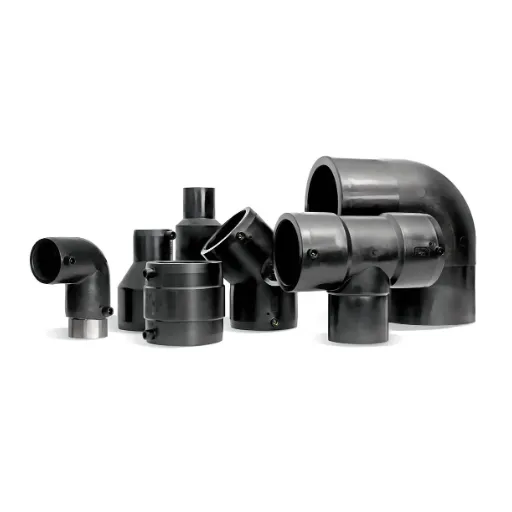
Understanding Electrofusion
Electrofusion is a special method used for joining High-Density Polyethylene (HDPE) pipes and fittings. An embedded heating coil is present in the fitting, which, when energized by an appropriate amount of controlled energy, melts and fuses the surfaces of the pipe and fitting to provide a strong leak-proof joint. Electrofusion is widely appreciated for its precision and the ability to achieve a reliable joint under difficult conditions, such as in very confined spaces, or for repairs.
One thing that makes electrofusion a good alternative when automated equipment is to be used is that it guarantees the same results with minimal human error. It is often used in gas distribution, water systems, and industrial applications that must ensure safety and integrity. Without any variation in temperature or time specification, electrofusion connects pipes in such a way that they can hold big pressure; hence it is one of the options for a critical infrastructure project.
Moreover, this style of electrofusion is very adaptable as it combines pipes of different sizes and wall thicknesses for use in varied applications. Use of this method is regulated by industry standards and guides to ensure safe use. By integrating real-time monitoring technologies, engineers are now able to verify fusion joint quality during installation, thereby minimizing failures and maximizing system performance.
Steps in Electrofusion Welding
-
1
Preparation of Pipes and Fittings
Using a pipe cutter or saw, cut the pipe to the required length. It should be a proper end cut and should not be damaged. Clean the outer surface of the pipes and the inner surface of the fittings for any dirt, grease, or contaminants. Removing the oxidation layer from the pipe surface by scraping ensures proper bonding.
-
2
Marking and Alignments
Mark on the pipe the insertion depth when the pipe is inserted properly into the fitting. Also, align the pipes and fittings such that there is no angular misalignment.
-
3
Clamping
Clamp the pipe and fittings tightly by using a special clamp or restraining devices so that the job does not move during welding, which is critical.
-
4
Connection With Electrofusion Processor
Attach the leads of the electrofusion machine to the fitting terminals. Ensure that all connections are firmly made to avoid electrical arcing. In most modern processors, barcode scanners can scan information such as fusion time, and voltage, and send the data for automatic operation.
-
5
Welding Process Initiation
If the electrofusion does not start immediately, initiate the welding process from the electrofusion processor. The processor will feed voltage and current in an exact amount so that the embedded coils inside the fitting melt the joint surfaces, thereby fastening with strength. Use the fusion times and cooling periods provided in the instructions of the fitting manufacturer for exactness.
-
6
Cooling
Keep cooling the joint naturally as per the time given in the manufacturers’ guidelines. Do not touch the joint, nor put stress upon it, until the time is potentially over.
-
7
Inspection
Visual check for proper joint fusion. The bead should be uniform all around the joint. For critical applications, one can check the strength and integrity of the joint by ultrasonic or pressure testing methods.
🔬 Technology Integration
Incorporating high technology with strict adherence to the above will assure engineers in the design of reliable and durable pipeline systems.
Advantages and Limitations of Electrofusion
✅ Advantages
🎯 Good and Reliable Joints
Electrofusion allows for consistent and durable connections, meaning long-term reliability of a pipeline system. It has been documented how properly performed electrofusion joints can have tensile strength equal to or greater than those of the materials connected.
🏗️ Works in Difficult Conditions
Electrofusion can be done in cramped conditions or a confined area where conventional welding methods cannot be applied. It is, therefore, ideal for repair works or installations in urban or underground settings.
🌱 Clean Process
It is a very clean method, with almost zero emissions generated in the process of joining compared to others, thus making it suitable for environmentally restricted areas.
🔄 Material Flexibility
It works for almost any thermoplastic, such as PE and PP, thus providing a versatile tool for many industrial applications.
💰 Lower Maintenance Costs
Maintenance costs are lower over the long term because pipelines need less frequent repairs due to the very high durability and integrity of electrofusion joints. Whenever repairs do take place, they are very fast and easy.
⚠️ Limitations
💸 High Initial Investment
Often, the requirement of equipment and materials specific to electrofusion processes may result in a higher initial price compared to other joining methods.
👨🔧 Expertise Required
It requires operational expertise for preparation, alignment, and execution of joints, whereby any flaw in execution may jeopardize joint integrity.
🔒 Limited Material Application
It is restricted to plastic jointings. This excludes everything else, such as metals or ceramics.
⏳ Preparation Time
Preparation of surfaces- cleaning, scrubbing, or abrasion-depends heavily on the types of materials involved. This makes the method slower as compared to other methods.
🌤️ Environmental Sensitivity
The environmental factors of temperature and humidity could affect the electrofusion process and hence require additional control to prevent joint failure.
Troubleshooting Common Issues in HDPE Welding
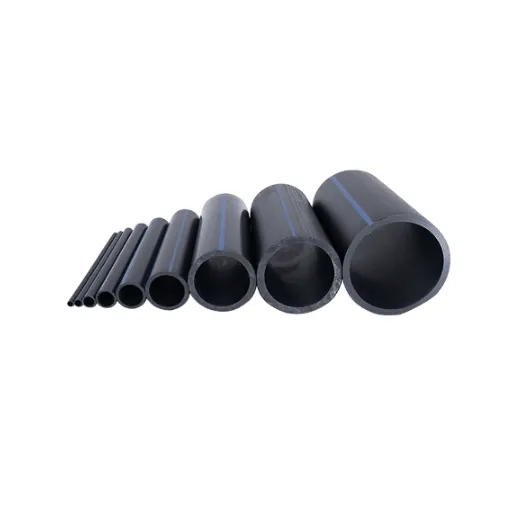
Identifying Common Welding Defects
During HDPE welding, it is of utmost importance to detect defects at an early stage to avoid the compromise of the joints’ integrity and durability. Some of the common welding imperfections in HDPE are:
🔗 Incomplete Fusion
This defect occurs when the welded surfaces do not fuse completely due to insufficient application of heat or pressure during the process. Hence, the joints may be weak and may fail when subjected to mechanical stresses.
🧽 Contamination
Precipitate dirt, grease, or moisture in the bonding surfaces would reduce weld strength considerably. Usually, one must clean and prepare these surfaces to avoid making such a weld.
📏 Misalignment
The misaligned pipes or fittings would create irregular welding, causing premature joint failure. Therefore, an exact alignment is necessary for proper flow and strength throughout the pipeline.
🔥 Overheating
Heat beyond limits during welding brings about degradation of material on the joint, and thus the material becomes brittle or loses strength in its place. Such phenomena must be prevented, so temperature settings must be carefully monitored.
❄️ Cold Welding
If there is no or insufficient amount of heat for the melting of HDPE materials, then a brittle joint will be formed and may give way or crack under minor stresses.
🔍 Early Detection
By having a grasp on these usual defects, the operators can thus take preventive measure toward perfecting the welding operation for high-quality and durable joints.
Solutions for HDPE Welding Problems
In order to mitigate the problems common with the welding of HDPE, several formation strategies and considerations may be brought to bear:
🌡️ Proficient Temperature Control
In doing so, make sure that the welding gear is maintained at the correct temperature. High-quality temperature aldermen regulate so that the source is neither overrated nor underheated. Thermometers to the highest standard should be incorporated in calibration.
🧼 Surface Preparation
Thoroughly clean HDPE surfaces prior to welding to ensure no dirt, oils, or any other contaminants interfere with welding. This clean surface promotes optimum fusion and hence prevents substandard joints or cold welding.
⚖️ Constant Pressure Application
Maintain a constant pressure value during the entire welding operation. Unequal or excessive values cause distortion to the joint, thereby weakening its structural integrity. Always use automatic or standardized instrumentation whenever possible.
🌤️ Environmental Conditions
Whenever feasible, carry out welding activities in controlled environments. An atmosphere with too much moisture, dust, or with fluctuating temperature can be inimical to HDPE welding. If working outdoors, try to stand up protective screens against such factors.
🔍 Material Quality Inspection
Check the quality of HDPE material prior to welding. Defective material or inconsistencies within may give the weld a bad side, regardless of how docking procedure is conducted. Inspect thoroughly or let suppliers provide certified materials for the guarantee of good materials.
👨🎓 Operator Training and Skill Development
Proper training should be provided to operators regarding the dynamics of HDPE welding. A skilled operator will be more apt to perceive difficulties and adjust the process to obtain the best results.
📈 Long-term Benefits
By combining these practical solutions with technical tools and regular maintenance, there is a marked improvement in the quality of HDPE welding. A proactive approach means not only durable welds but less expense in repair and replacement in the long run.
Preventive Measures in HDPE Welding
By taking precautions while welding HDPE, the final product will have a consistently good quality. One major step is storing HDPE properly and ensuring it’s not contaminated or damaged before welding. Keeping it clear of direct sunlight and humidity would avoid early deterioration.
Another preventive measure is to calibrate the welding equipment accurately according with the specifications. Carrying out checks and adjustments on time prevents variations in temperature, pressure, and alignment-set during welding. Normal maintenance, such as cleaning the tools and inspecting them for faults, will help keep unexpected breakdowns at bay.
Operator training is another measure of prevention. Hands-on workshops help operators keep up with reformed welding techniques so they may adjust to changes in industry standards and applications.
Welding processes need to be carried out under the strictest quality control, and inspections must be conducted before and after weld completion, to avert any possible flaws. In contrast, non-destructive testing techniques, ultrasonic testing being an example, help in detecting internal defects that might not be visible. Very importantly, the area slated for welding must be free from contaminants; even dirt can adversely affect the strength and durability of a weld.
✅ Final Result
In effect, adoption of such measures will result in fewer failures, longer life of the HDPE welds, and discharge of accumulative expensive repairs, thereby cementing project reliability and efficiency in the long run.
Best Practices for Successful HDPE Welding
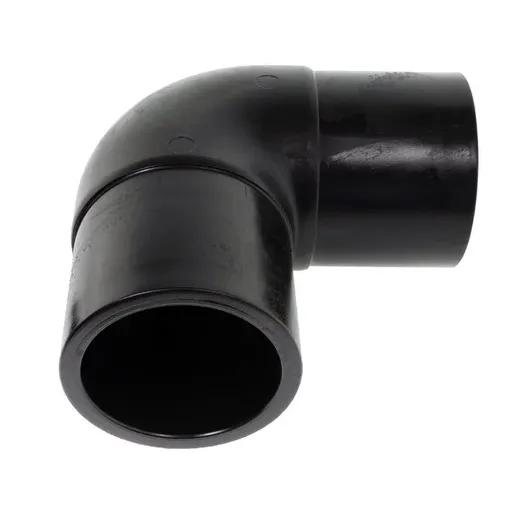
Preparing HDPE Pipes for Welding
I always start with a thorough inspection of the pipes for any visual or internal defects when undertaking an HDPE welding project. This includes checking for any cracks, warping, or damage that could affect the integrity of the weld. Should there be any issues detected, I immediately ensure that they are fixed before moving on. Proper inspection will hence do away with any chances of weld failure while in operation.
After the inspection, I wipe the HDPE pipe surfaces clean thoroughly. Any dirt, grease, or contaminants, no matter how minute, can influence the weld’s appearance and strength, hence the utmost care is taken in this respect. I normally apply a plastic surface cleaner and then use a lint-free cloth to remove any residue. In other words, the cleaner the pipes, the stronger and longer-lasting the weld.
The pipe ends are prepared for alignment and beveling to ensure a flawless welding. For alignment, pipe clamps or other alignment devices are used so that the ends of the pipes can be perfectly set. Edges are then beveled at the required angle to form a stronger weld compared to that on square edges. By strictly following these steps, I guarantee a better project outcome and a longer-lasting result.
Safety Measures in HDPE Welding
Safety is the most important aspect during the HDPE welding process, as it involves high temperatures and specialized equipment. Some of the basic safety measures include wearing proper personal protective equipment, such as heat-resistant gloves, safety goggles, and flame-retardant clothing to protect the welder from burns and ultraviolet radiation. Proper ventilation must be provided to ward off the accumulation of fumes generated during welding because such fumes become health hazards if inhaled for longer durations. An organized workspace is another important consideration to prevent hazardous incidences due to tripping over tools or materials.
🛡️ Equipment Safety
Safety wise, equipment inspection and maintenance have essential roles to play. That means checking welding equipment for damage or wear before the welding, together with checking if it works at all, lest failure of equipment should lead to an accident. Operators must be trained in the handling and use of solderers, especially regarding heat application and pressure so as not to create a hazard.
Following these safety principles alongside keeping abreast with industry standards will ensure the safety of workmanship while fostering the creation of first-class welds in HDPE applications.
Maintenance of Welding Equipment
Proper welding equipment maintenance induces longer life, better efficiency, and safety in operation. Operators must inspect electrodes, nozzles, and cables frequently for wear or damages. Keeping the welding machines clean must be prioritized over maintenance because dirt, grease, or debris could affect the performance of the machines. Dust and foreign particles must be removed if they have any possibility to hinder the device performance-through heat or anything else.
The moving parts are also lubricated so that friction is reduced and the life of the machine is extended. Calibrating the equipment frequently guarantees constant performance and accuracy in the heat and pressure applied. Besides, operators should measure up to their own maintenance obligations by replacing any worn-out parts as stated by the manufacturer; that way, unexpected breakdowns can be avoided.
📋 Systematic Approach
Installing the scheduled maintenance checklist into a program will allow the maintenance team to be more efficient and make sure no vital areas are left unaccounted for. Applying the modern set of diagnostic tools for fault detection and performance analysis would enable professionals to maintain operation integrity and get the longest possible life from a welding machine.
References
- Springer: Experimental study of the weld bead zones of a high-density polyethylene pipe (HDPE) – This study examines the weld bead zones of HDPE pipes using butt-welding techniques.
- MDPI: The effect of welding defects on the long-term performance of HDPE pipes – Discusses the impact of welding defects on HDPE pipes, focusing on butt fusion and electrofusion methods.
- ScienceDirect: Experimentation and optimization of HDPE pipe electro fusion and butt fusion welding processes – Explores the optimization of welding processes for HDPE pipes, including electrofusion and butt fusion.
- ASME Digital Collection: Welding residual stress in HDPE pipes: measurement and numerical simulation – Focuses on the residual stresses in HDPE pipes during and after welding.
Frequently Asked Questions (FAQ)
Q: How does fusion welding work for HDPE pipes?
A: In the fusion welding of HDPE pipes, operators apply direct heat to the pipe ends in order to bring them to the correct fusion temperature, thus melting and uniting the two pipe ends. These welded joints are strong enough to endure hydraulic pressure and mostly find application in gas distribution systems.
Q: Up to what diameter can fusion welding be applied to HDPE pipes?
A: In general, HDPE pipes from very small to very big diameters are welded through fusion welding. But specifics will depend on the kind of equipment used and on the manufacturer’s instructions for the correct fusion procedure applied in any given project.
Q: What effect does cooling time have on the welding of HDPE pipes?
A: Cooling time is a very important parameter in welding HDPE pipes as it gives time for the joint to solidify and gain strength. It reduces the possibility of defects and allows the fused section to accept operational stresses in different systems.
Q: What is the difference in butt welding and saddle fusion?
A: Butt welding means joining by putting heat to two ends of HDPE pipes in direct contact. In contrast, saddle fusion works for joining a branch pipe to a main pipe. Each method needs specialized tools and must be carried out according to the manufacturer’s instructions for best results.
Q: What tools will be used to weld HDPE pipes?
A: Welding HDPE pipes needs special tools such as an HDPE pipe welding machine, hot plate, and various clamps. These tools allow proper alignment and temperature control during the fusion process to ensure good joints.
Q: How do contaminants interfere with HDPE pipe welding?
A: Contaminants hinder the fusion by not allowing the ends of the pipes to adhere properly. It is thus necessary to clean the surfaces to be joined of any contaminants in order to have a safe and durable weld.
Q: Which methods of welding joints exist for HDPE pipe?
A: Welding HDPE piping allows for several joining methods: butt fusion; saddle fusion; electrical fusion, depending on what kind of application is involved and on the type of weld required to have the system integrity.
Q: Can hydraulic systems use HDPE pipes?
A: Yes, HDPE pipes are commonly used in hydraulic systems because of their high strength-to-weight ratio and corrosion resistance. Fusion welding processes must be adequately performed to have a leak-free joint in these applications.
Q: What is the melting point of HDPE, and why is it so important?
A: The melting point of HDPE is commonly accepted as lying roughly between 120-130°C (248-266°F). The welding process must be carried out while considering this information, so that the material is actually fused, not degraded.
Q: What effect does heat have on the fusion process for HDPE pipes?
A: The main purpose for heating during the fusion process is to soften the material around the edge of the pipe ends so that the pipe ends can be pressed together and properly fused. Control over the heat will result in a strong weld that is durable enough to meet the required specifications.



